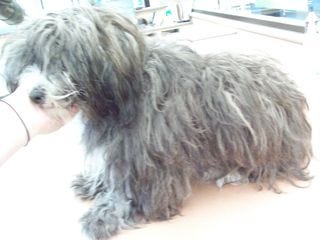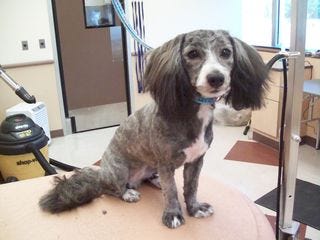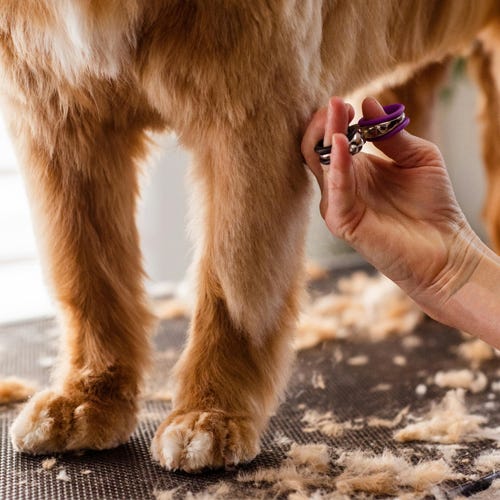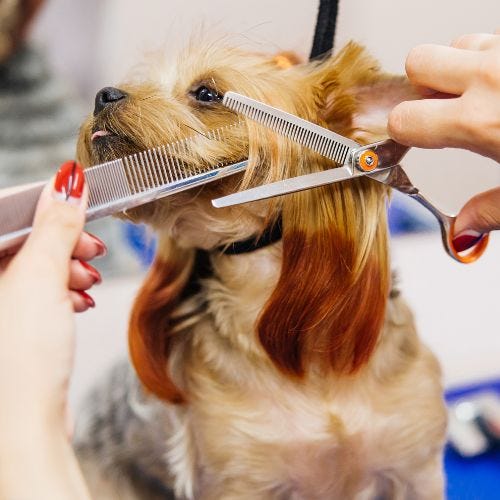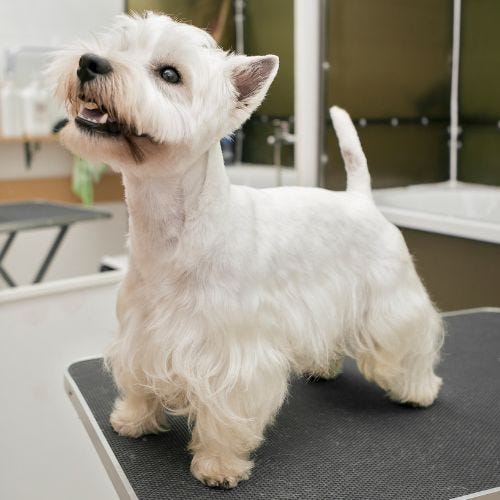The PetEdge Q&A Session: Dog Behavior With Jessica Moorhead Part 2
11/21/2011
Welcome to Part II of our interview with dog behavior expert Jessica Moorhead.
In Part I of our interview last week, Jessica talked about her background studying dog behavior, how knowing dog behavior has helped to prevent her from being bitten, and how some common dog behavior signs are misinterpreted by first time groomers and bathers.
In Part II, Jessica gives us her tips for dealing with shy or aggressive dogs.
Thanks again to Jessica for taking the time to share her knowledge and experiences with us.
We're lucky to have such committed and involved groomers as our customers.
Maltipoo Before:
Jessica Moorhead
New Rochelle, NY
Q. Do you have a go-to approach for dealing with shy dogs? Aggressive dogs?
A. My go-to approach for dealing with most dogs is the same whether they are shy, friendly, or aggressive. You always need to assess the situation and never assume you know what the dog is going to do.
If I'm meeting a dog, I will remain standing slightly off to the side at an angle, and I will basically ignore them at first. As harsh as it sounds, I don't want to rush into anything. Every move I make with my arms or legs is very deliberate and very slow.
If the dog at this point is curling its body into a C shape and is showing all the signs of "Please pet me and love me!" I will kneel on one knee and pet the dog on their chest or back thighs.
If the dog is aggressive or fearful, I will chit chat with the pet parent and let the dog come to me and sniff me. A lot of the time, the pet parent is anxious about their dog's reaction, so once the owner calms down, it makes it easier to handle the dog.
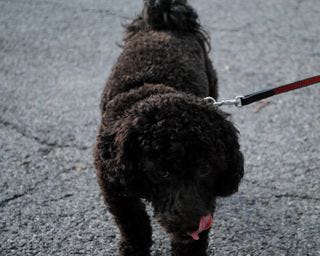
A photo of Jessica's dog, Tucker, licking its lips. Lip licking can be a sign of nervousness, and an indication that the dog has the potential to bite.
If the dog is fearful, I will slowly kneel on one knee and put my hand gently out in front of me, but not at the dog. Again, I will remain at an angle, facing slightly away from the dog. I won't look into their eyes, I won't try to grab them and I won't speak loudly or make sudden movements. I always let the dog come to me first. Once the dog accepts you, then you can move on to touching them, etc.
With an aggressive dog, I will have the owner keep the dog on the leash. If I can get near the owner without the dog biting me, I will take the leash and then continue to talk to the pet parent. Once I have the leash, I will have the dog come with me wherever I walk. Where I go, the dog goes.
I never go too far from the owner, but I will keep adding distance until the dog realizes it's me or nothing else.
I do not baby talk dogs that are aggressive, and if I start getting fearful near them I quietly hold my breath, which slows down my heart rate so I can't get the adrenaline rush. I am very direct with aggressive dogs and I refuse to tolerate anything.
When on the table, as soon as a lip goes up or they start to growl I distract them with a quick loud noise or a bell, or I spray the air with a perfume of some sort (not at them, but near them).
The same goes for the "eye challenge." If an aggressive dog challenges me in the salon, I will not look away but I won't let it drag on. I use the distraction method.
My methods may not be perfect, but they've kept me and my coworkers safe. Dogs aren't human beings and they aren't wolves. They have their very own language that we need to learn. Dogs talk to us all the time, but the majority of pet parents don't pay attention.
Most dogs aren't thrilled to be groomed, but we can try to make it the best experience possible by "listening" and understanding what they are telling us.
######
Your Turn
Do you have stories about dog behavior challenges that you've overcome in the shop? What was the challenge and how did you fix it? Post your comments here or on our Facebook wall.
Thanks and happy grooming :)
#####
PetEdge is your source for discount dog grooming products and wholesale pet products. Shop from over 17,000 pet products in our catalog and online at PetEdge.com.

